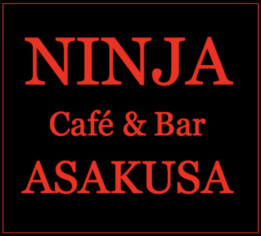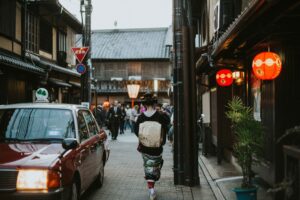Top 3 Castles in Kyoto for Your Next Visit
Kyoto is known as the ancient capital of Japan and is home to many historical buildings.
Among them, castles have played an important role as symbols of Japanese samurai culture and power.
This article describes the history and highlights of three castles in Kyoto - Nijo Castle, Fukuchiyama Castle, and Fushimi Momoyama Castle.
By learning about them, you will be able to enjoy Japanese culture and history more deeply.
We hope you find this information useful on your next visit to Kyoto.
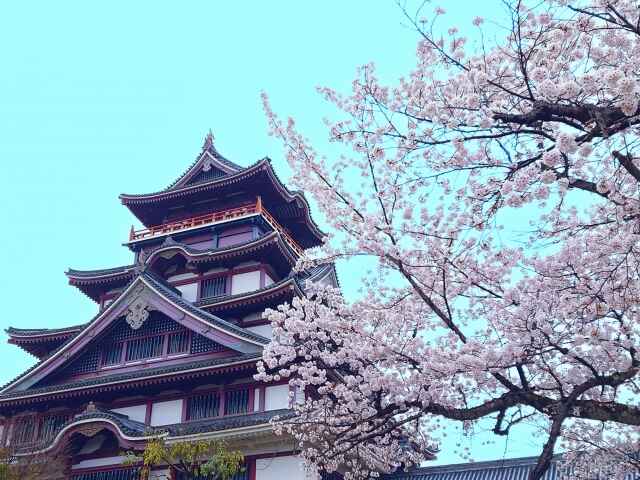
- About Nijo Castle
- Historical background of Nijo Castle
- Historical Background and Attractions of Honmaru Palace
- Historical Background and Attractions of Ninomaru Palace
- About Fukuchiyama Castle
- About Fushimi-Momoyama Castle
- Summary
1. About Nijo Castle
Historical background of Nijo Castle
Nijo Castle was built in 1603 by order of Tokugawa Ieyasu.
Tokugawa Ieyasu was a man who unified the country through numerous battles and established the Edo shogunate.
Simply put, the shogunate is a system of government led by the shogun and other warriors.
Initially, Nijo Castle was built to protect the Kyoto Imperial Palace, where the emperor resided, and to provide lodging for the shoguns in Kyoto.
It served as an important center of politics in Kyoto, and was also the place where the shoguns would conduct their political affairs.
It was here at the Ninomaru Palace that the 15th shogun, Yoshinobu Tokugawa, announced his intention to return the political power from the shogunate (politics conducted by the samurai) to the imperial court (politics conducted by the Emperor and the nobility) in 1867.
This marked the end of the Edo shogunate.
Nijo Castle, which witnessed the beginning and end of an era, was recognized as a World Heritage Site in 1994, attracting tourists from all over the world.
For more information on Nijo Castle, visit our article here Nijo Castle: A beautiful World Heritage with history and culture
Historical Background and Attractions of Honmaru Palace
The Honmaru-goten Palace was closed to the public for a long time due to maintenance repairs, but the repairs were completed in the spring of 2024 and the building reopened to the public on September 1, 2024.
Reservations are required to visit, so please visit this website.
Now, let us have a look at the history and highlights of the Honmaru-goten Palace.
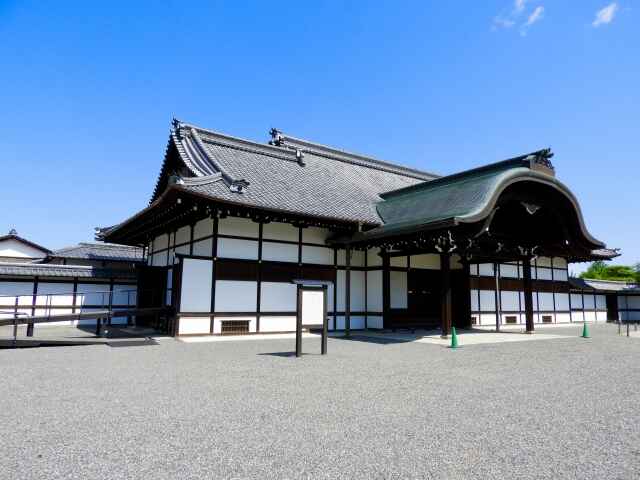
The original Honmaru Goten was built in 1626 during the reign of Tokugawa Iemitsu, the third shogun.
However, it was destroyed by fire in 1788, and a temporary palace was built but then got dismantled.
Eventually, Honmaru Palace moved to a part of the Katsura-no-miya Palace, located north of the Kyoto Imperial Palace, which became the present Honmaru Palace.
Since then, it has been used as a facility visited by the Meiji Emperors and Empresses, as well as the Taisho and Showa Emperors when they were Crown Prince.
As a result, the Honmaru Goten is more like a noble palace than a castle.
Each room offers a taste of traditional Japanese architectural style and design.
For example, the “Goshoin Ichinoma” room is said to be the most prestigious, with a raised floor and large gold leaf on the walls.
It is also famous for its 237 paintings on the walls.
The paintings have been preserved without any added coloring since they were created, so please visit the site to see them in person.
Even if you cannot go inside, you can enjoy the beautiful harmony of the Honmaru Palace and the garden.
If you would like to learn more about the history and charms of the museum, please visit this website.
Historical Background and Attractions of Ninomaru Palace
The Ninomaru Palace consists of six buildings in the Shoin-zukuri style architecture.
It is a huge building with dozens of rooms, each with a total floor space of approximately 800 tatami mats.
It was mainly used for politically important occasions during the Edo period, such as when meeting with envoys from the Imperial Court.
Inside, there are more than 3,000 paintings by the Kano school of painting, a corridor called “Uguisu-bari,” which makes a sound when walked upon, and beautiful gold ornaments and carvings.
The Uguisubari corridor is a corridor that makes a sound like a Japanese bush warbler's cry when you walk on it.
It serves as a warning of the presence of intruders such as ninjas and assassins.
Because it was an important building, it was equipped with not only decorative features but also defensive practicality.
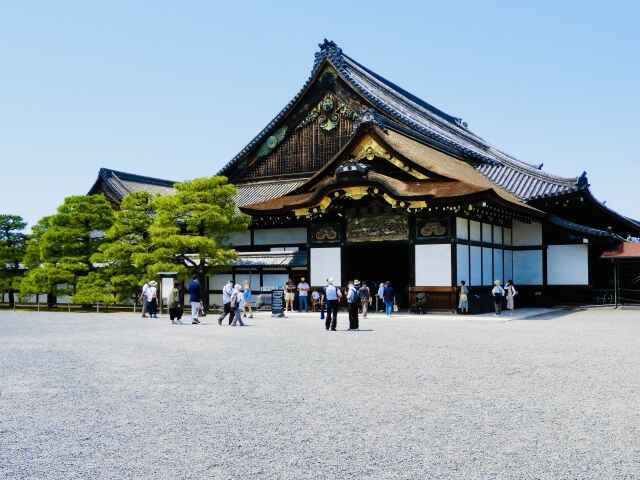
Outside the Ninomaru Goten, three gardens and the beautiful Karamon Gate can be seen.
Reservations are required to visit the Ninomaru Goten.
For more information, please visit this website.
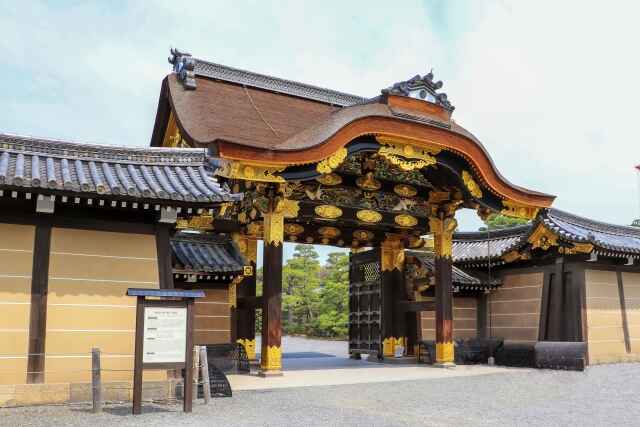
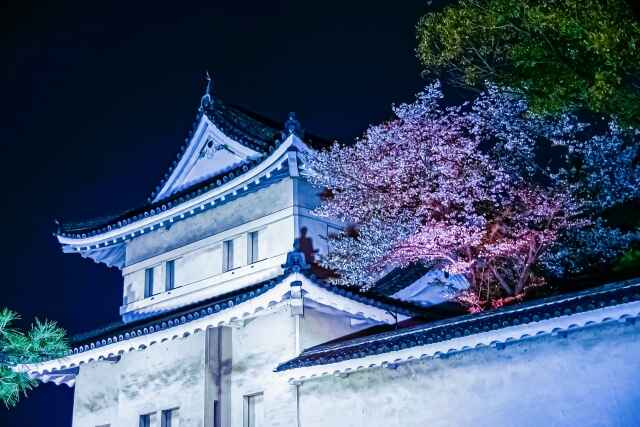
2. About Fukuchiyama Castle
Fukuchiyama Castle is located in Fukuchiyama City, Kyoto Prefecture.
It is believed to have been built (an existing castle was repaired and named Fukuchiyama Castle) around 1580 by Akechi Mitsuhide, a warlord of the Warring States period.
Akechi Mitsuhide is very famous for his betrayal of Oda Nobunaga in the Honnoji Incident of 1582, as well as for his castle construction, war tactics, and his deep understanding of the culture of waka poetry and tea.
The fact that the stone walls of Fukuchiyama Castle were made from surplus gravestones and other materials shows Mitsuhide's rationality and ability.
In the Meiji era (1868-1912), Fukuchiyama Castle was abandoned in 1873 and its castle tower was torn down.
However, with the help of donations from various parts of the country, reconstruction of the castle began in 1986.
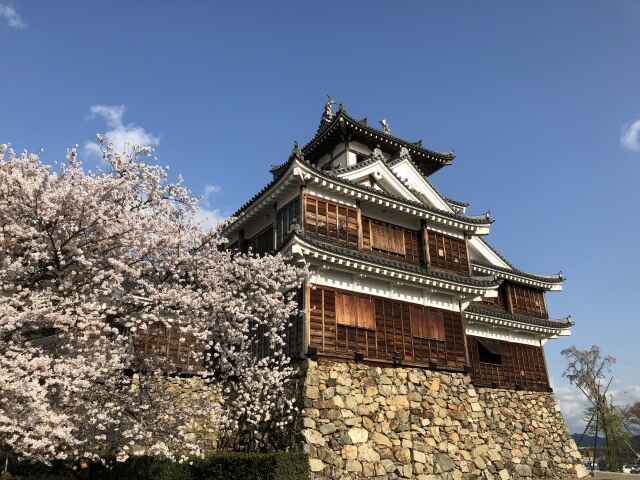
The area around Fukuchiyama Castle is maintained as a park and is known as a popular spot for cherry blossoms and autumn leaves, attracting many tourists.
In addition, the Shoryu Bridge, a bridge near the castle, is also a tourist attraction.
Visitors can also take a tour of the site, although it should be noted that the museum is closed on certain days.
Inside the castle, there are exhibits on the history of Fukuchiyama Castle and Akechi Mitsuhide, and from the top floor, visitors can enjoy a beautiful view of the castle grounds.
Fukuchiyama Castle is not only a place associated with Akechi Mitsuhide, but also a place with beautiful natural surroundings and historical background.
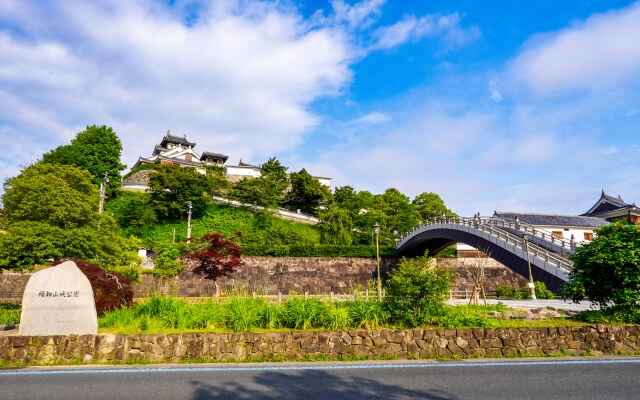
3. About Fushimi-Momoyama Castle
Fushimi-Momoyama Castle (Fushimi Castle) was built by the order of Toyotomi Hideyoshi, a military commander who unified the country.
However, it was repeatedly burnt down and rebuilt after battles such as the Battle of Fushimi Castle and the Battle of Sekigahara.
Today, the area has been developed into a park called Fushimi-Momoyama Castle Athletic Park, and only the mock castle tower built on the north side of the site of the Fushimi Castle Honmaru remains.
The mock castle tower was part of an amusement park called Fushimi-Momoyama Castle Land, which opened in 1964 and closed in 2003.
Its power and magnificence are considerable.
The harmony of the castle and cherry blossoms is especially beautiful and worth seeing from the end of March through April.
Another attraction of Fushimi-Momoyama Castle is that it can be visited easily, as it is free to visit from the surrounding area.
A stroll through the sports park and a view of Fushimi-Momoyama Castle will relax your body and mind while you contemplate history.
Fushimi is also famous for its local Kyoto sake.
Why not take a sightseeing tour of Fushimi-Momoyama Castle and stop by one of the famous sake breweries?

4. Summary
In Kyoto, there are castles filled with history and culture, such as Nijo Castle, Fukuchiyama Castle, and Fushimi Momoyama Castle.
Learning about the unique charm and history of each castle before you go sightseeing will make your trip even more exciting.
If you are interested in Japanese culture, a visit to these castles is highly recommended.
We invite you to experience good old Japan through its magnificent history and beautiful scenery.
What are we?
We run Ninja Experience Cafe in Tokyo, Kyoto and Osaka, Japan.
Here you can immerse yourself in Japanese culture through experiencing ninja training.
Both adults and children are welcome to try their hand at defeating the ninja master inside the cafe.
The cafe is an indoor interactive zone, so it can be enjoyed even on rainy days.
If you are thinking "I want to be a real ninja too!” or interested in becoming a real ninja, please visit us.
Reservations can be made here.
Unauthorized copying and replication of the contents of this site, text and images are strictly prohibited.
